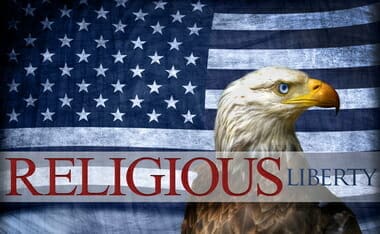Part 2 of 7 from a prison in Mississippi. Paul Washer shares seven messages that take you through the Gospel of Jesus Christ. One message of the series, “Freedom In The Gospel”, will be released every week starting Friday, January 24th, only on our YouTube channel and website.
Sermon
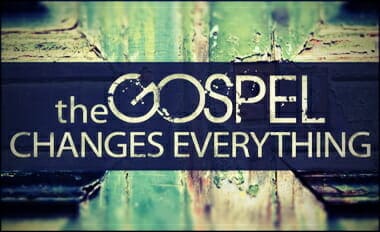
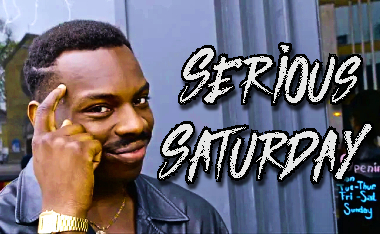
Paul Washer: Freedom In The Gospel (Part 1) | Mississippi Prison
Part 1 of 7 from a prison in Mississippi. Paul Washer shares seven messages that take you through the Gospel of Jesus Christ. One message of the series, “Freedom In The Gospel”, will be released every week starting Friday, January 24th, only on our YouTube channel and website.
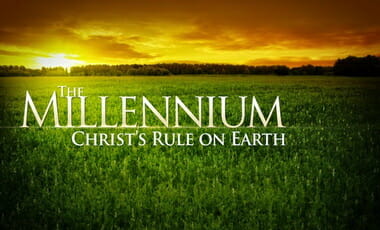
Thinking Through Revelation
We are getting our waders on at church to get knee deep in chapter two of John’s Revelation. However, this opening portion of this new series was excerpted here with my addition of graphics, a small audio addition by J. Vernon McGee. Our pastors first sermon (week 1) was a great intro that smooths out the creases in “where the chips fall” regarding varying views on this “omega” book of the Bible.
Here are some related J-Vern sermons/commentary I went through as well
- Revelation 01 – J Vernon Mcgee – Thru the Bible
- Revelation 20 – J Vernon Mcgee – Thru the Bible
- The Millenium – J Vernon McGee – FULL Sunday Sermon
A few books I recommend on the subject that were listed in the video near the end:
- Hyper Preterism: “When Shall These Things Be?: A Reformed Response to Hyper-Preterism“
- Dispensationalism: “Dispensationalism: Essential Beliefs and Common Myths (Revised and Updated)” (Video Bonus: What Is Dispensationalism?)
- Supersessionism? Or Not?: “Has the Church Replaced Israel?: A Theological Evaluation”
- A Good Layman’s Guide: “The End Times: A Guide to Bible Prophecy and the Last Days”
I use a quote from Walter Elwell in the video that says the Millennial time-period is only mentioned in Revelation 20. But here, Dr. Michael J. Vlach, shows us that allll the waay back in Genesis, this time-period is referenced:
Genesis 1:26, 28 and Millennial Views
A comparison of how the millennial views of Premillennialism, Postmillennialism, and Amillennialism relate to Genesis 1:26, 28 and the kingdom mandate for man to rule from and over the earth

A ‘LOT’ On My Mind | Sermon by Rev. Cyril Jermin
I truncate the sermon a tad to focus in on the meat of the issue in order to share via a conversation with a couple brothers about our sinful nature and them sharing their previous “pre-Christian” lives. The original [full] sermon by Rev. Jermin can be found here. The “Billy Paul – Me and Mrs. Jones” insert can be found here in full.
Here is an excerpt of J. Vernon McGee’s thoughts on Lot’s wife’s disobedience. Longing for the life before God promised her redemption:
But his wife looked back from behind him,
and she became a pillar of salt
[Gen. 19:26]
I think this verse has been greatly misunderstood. Why in the world did Mrs. Lot turn and look back? I think that the reason is twofold. First of all, she turned and looked back because she did not want to leave Sodom. She loved Sodom. She loved Lot, too, but it was a lot of Sodom that she loved. And she didn’t want to leave it. She was probably a member of the country club, the sewing club, and the Shakespeare club. In fact, there wasn’t a club in town that she was not a member of. She just loved these little get–togethers in the afternoon. I’m not sure but what they met and studied religion in a nice little religious club also. She was right in the thick of it all, my friend, and she didn’t want to leave. Her heart was in Sodom. Her body walked out, but she surely left her heart there.
This is a tremendous lesson for us today. I hear a great many Christians talking about how they want to see the Lord come, but they are not living as if they mean it. On Sunday morning, it is difficult to get them to leave their lovely home. And on Sunday night, they are not going to leave their lovely home because they love television, too. They have a color television, and they are going to look at the programs on Sunday night because there are some good ones then. But when the Lord comes, my friend, you are going to leave the television; you are going to leave that lovely home; you are going to leave everything. I have just one question to ask you: Will it break your heart to leave all of this down here?
I have asked myself that question many times. To be honest with you, I am not anxious to leave. I would love to stay. I have my friends and loved ones whom I want to be with. And I have the radio ministry that I want to continue. I’ll be frank with you, I hope the Lord will just let me stay here awhile longer. But I also want to be able to say that when He does call, I will not have a thing down here which will break my heart to leave—not a thing. I love my home too, but I would just as soon go off and leave it. How do you feel about that today? Mrs. Lot turned and looked back, and this is one of the explanations.
The other reason that she looked back is simply that she did not believe God. God had said, “Leave the city, and don’t look back.” Lot didn’t look back; he believed God. But Mrs. Lot did not believe God. She was not a believer, and so she didn’t really make it out of the city. She was turned to a pillar of salt.
I am not going to go into the story of Lot’s two daughters in verses 31–38. It is as sordid as it can be. Frankly, Lot did not do well in moving down to the city of Sodom. He lost everything except his own soul. His life is a picture of a great many people who will not judge the sins of their lives. They are saved, “yet so as by fire.” The Lord has said in a very definite way to these folk who have put all their eggs in a basket like this that if they will not judge their sin down here, He will judge it. Apparently, that was the case in Lot’s story.
Vernon McGee, Thru the Bible Commentary: The Law (Genesis 16-33), electronic ed., vol. 2 (Nashville: Thomas Nelson, 1991), 51–52.

Plastic Pastors | Environmental Myths In the Pulpit
The original video [2010] had some text I inserted in it that was unreadable. So I switched up the graphics in the texts spot. Plus I split the video into two to deal with THAT specific topic, individually below. They are:
Trash Islands, and, Water Bottles.
INTRODUCTION
While I criticize some stats in the two excerpts of a sermon here, take note that both the pastor and the church involved are one of the better pastors/churches in our valley (SCV) and the whole of the message is not affected by this portion. This sermon was preached on 7-11-2010. This was repotted here in 2016 from an old blog.
My main point is that when one goes to organizations that are driven by an almost eco-fascist drive or some emergent liberalism, you are going to get skewed stats. This sermon merely gives me the opportunity to critique eco-leftists ideology.
Again, I would not tell people not to go to this church. It is a wonderful church and I would encourage visiting and joining. (I chose not to name the church or pastor because many people may not understand the nuances I am pointing out and may over react.)
Pastors are people too — they are not all-knowing. Likewise, they can be influenced by the united cacophony of media, entertainment, and the like, just as many I know are. I just happened to be “in the know,” this pastor has other [more important] aspects of his office to be knowledgeable in — not to be versed in every jot and tittle of the culture war.
The original title, and thus URL for this post was:
- Plastic Pastors Critiquing an Otherwise Great Sermon
I wasn’t going to post on this subject, and all-in-all, this topic is one Christians have the moral superiority in.
A poignant point from a discussion about Global Warming via a professor I admire:
…one that bedevils an atheist philosopher friend of mine: “if human beings are part of nature, then why is that we, rather than the chimpanzee, have a special responsibility to care for nature. And if we do have this responsibility, what is its limits and rightful powers? Is irrigation moral if it leads to human flourishing, or should we ask the beavers for their permission?” I am not being facetious. If there is nothing special about us–if we have not been given “dominion” over nature, as the Bible teaches–then it seems that the atheist environmentalist has a very tough time explaining why we should be in charge and what technological innovation that disturbs natural patterns is appropriate for that responsibility. Hence, Christian environmentalism is far more defensible than any secular variety, IMHO.
(Francis Beckwith quoting a friend)

BUT, stats and movements founded on these false statistics shouldn’t be used in the pulpit. When the secular left rejects true religion, they supplement their spiritual quest with that of fallible mans quest as the object of their religion. Which is why many call — rightly so — modern day environmentalism a religion.
A recipe for disaster.
So pastors should be wary of this stretching of man’s credibility found all-too-often in the environmental progressive left. Likewise, this leftism has infected the church. Here is an exceprt from a book written by “emergent leaders” that will shed some light on how this man-made religion infects the church. This is taken from an old post entitled, “Feminist Extremism, Eastern Concepts in Youth Specialties and Gaia in Emergence“:
Via: A is for Abductive: The Language of the Emerging Church.
C is for Creation
What modern secularists called “nature” (a term that turned a sacred work of art into a profane source of “raw materials”) and what modern Christians always linked with “versus evolution” (thus turning a sacred mystery into a profane and misguided argument).
What ancient Christians viewed, along with Holy Scripture, as one of God’s two primary sources of self-revelation.
What emerging Christians will cherish as God’s art gallery in which we live and of which we are a part and for which we were created as planetary trustees and caretakers.
Later of course we get to the “action” (the “praxy” if you will) behind the emergent meaning:
… For postmoderns, it’s “Mother Earth,” holy ground tragically portrayed in the words of James Merrill: “Father Time and Mother Earth, A marriage on the rocks.” No wonder the word environment is used less and less; it’s too cold a word for this theology of “holy ground.”
If our humaneness is most manifest in our relationships—with swallows and snails, with friends and enemies, with the Father, Son, and Holy Spirit—the modern world needed marriage counseling big-time. The willingness to sacrifice living systems for commerce has meant that the lungs and other vital organs of Mother Earth are being cannibalized to the point where “natural” disasters are no longer “natural” but induced.
The mad weather patterns of the past decade are a byproduct of disappearing forests (at current rates of deforestation, Ecuador will be totally barren of trees in 20 years), disappearing healthy air, and disappearing ecosystems….
There are now over 130,000 religion and ecology projects in operation worldwide. Unfortunately, very few of them are emanating from evangelical churches.
So when people like Rob Bell, Ken Blanchard, Leonard Sweet, or Brian McLaren mention “Creation,” Al Gore and Rosemary Ellen Guiley are thrown into the meaning and action taken from that word/concept.
REMEMBER, this church the sermon came from IS NOT an Emergent type church. This sermon merely gives me the opportunity to critique eco-leftists and liberal theology a bit. So the following is a video critique of parts of the sermon followed by more information about the topics:
Floating Trash Islands
(Just so you are “in the know,” Patrick Moore is the co-founder of Green Peace. He has since left the crazy environmental movement and pushes for common sense — achievable, goals)
Plastic Pastors: Great Pacific Garbage Patch
Chapter 6 of Patrick Moore’s book is here, “The Great Pacific Garbage Patch is Full of Plastic and is Twice the Size of Texas.”
- A new study published in Proceedings of the National Academy of Sciences could mean bad news for environmental doomsayers. Forget all those warnings about the million tons of plastic debris floating in the ocean. Ignore the photos that you think show the Great Pacific Garbage Patch. Andres Cozar of the University of Cadiz in Spain is the man who once extrapolated the 1 million-ton estimate. Since then, however, he has led research that collected samples at 141 ocean sites. Cozar’s new estimate: Between 7,000 and 35,000 tons of plastic are floating in the ocean. (The Great Pacific Garbage Patch Hoax | TOWNHALL)
There Is No Island of Trash in the Pacific: But the cause of clean oceans needed a good story. Our warming planet could use another one (SLATE)
… Moore’s Garbage Patch would grow in size and fame in the years that followed. The plastic-plankton soup he’d first discovered in 1997—which oceanographer Curtis Ebbesmeyer dubbed the “Eastern Garbage Patch” or the “Pacific Garbage Patch”—gained notoriety in a 2006 series for the Los Angeles Times that won a Pulitzer Prize. Its area had doubled: Now the patch was “twice the size of Texas.” (Some reports went even bigger.) As coverage intensified—the patch’s media profile peaked between 2007 and 2009—the soup coalesced into a garbage landmass with a more official name: the “Great Pacific Garbage Patch.” In 2007, the San Francisco Chronicle called the patch “a massive, eternal, slowly swirling vortex of noxious garbage the size of a continent and the shape of death itself, just floating out there in the middle of the Pacific Ocean, mocking life, humanity, God.”
But the Great Pacific Garbage Patch has always been less substantial than it sounds, less an island in the ocean than a big idea that floats around inside our heads.
[….]
In a way, that’s the very problem the Great Pacific Garbage Patch helped to solve, when the concept was invented. Like its mirror image, the hole in the ozone layer, the patch squeezed and flattened all our worries, sequestering them in a far-off region of the globe.
That’s how and why the patch came into being, both as a fully fledged idea and a media phenomenon, at the turn of the millennium….
MORE ARTICLES:
- Garbage: Another Environmental Claim Proven to Be Hyped (WUWT)
- There is no Great Pacific Garbage Patch (PATRICK MOORE)
- Are We Really “Choking the Ocean with Plastic”? Tracing The Creation of An Eco-Myth (WUWT)
- The Garbage Philosophy Behind the Great Pacific Garbage Patch Myth (THE FEDERALIST)
Other wise known as “The Great Garbage Patch Charlie Brown!”
This is with a h/t to The Dennis Prager Show:
“Great Garbage Patch” in the Pacific Ocean not so great claim scientists
Claims that the “Great Garbage Patch” between California and Japan is twice the size of Texas is “grossly exaggerated” said the research which reckons it is more like one per cent the size.
Further reports that the oceans are filled with more plastic than plankton, and that the patch has been growing tenfold each decade since the 1950s are equally misleading, the new research claimed.
In reality it often cannot even be seen from the deck of a passing boat, said the latest analysts from the Oregon State University professor of oceanography Angelicque White.
The scientist took part in a recent marine expedition to examine the mass of plastic that is floating in the ocean and found there was a problem.
But genuine scientific concerns are undermined by scare tactics from those proclaiming the trash patch is so big that there is more plastic than plankton in the Pacific….
Another news source says this:
Size of the Ocean Garbage Patch is “Grossly Exaggerated” (see also OREGON IUNIVERSITY)
The “Great Pacific Garbage Patch” is often said to be twice the size of Texas—but that and other scary-sounding claims are “grossly exaggerated,” some scientists are now insisting. A new study shows the plastic waste patch is actually 200 times smaller than previously claimed when comparing its mass to the amount of water; if you need a Texas-sized visual, it’s actually closer to 1% of the state’s area, says researcher Angelicque White.
She is quick to add that the amount of plastic in the ocean is definitely “troubling,” but that scare tactics only “undermine the credibility of scientists.” White adds, “it is simply inaccurate to state that plastic outweighs plankton, or that we have observed an exponential increase in plastic.” At this point, trying to get rid of the plastic is too expensive and potentially damaging to the ocean’s ecology, the Telegraph reports; White recommends focusing on prevention going forward. Click to read about its sister garbage patch in the Atlantic.
MORE SCARRY HEADLINES:
- Great Pacific Garbage Patch is now nearly 4 times the size of California
- The Great Pacific Garbage Patch counts 1.8 trillion pieces of trash, mostly plastic
- The great Pacific garbage patch may be 16 times as massive as we thought
- Great Pacific Garbage Patch weighs more than 43,000 cars and is much larger than we thought
Remember, the Left leaning SLATE MAGAZINE said it was a lie to cause action. But here is SNOPES noting the two wildly separated views:
The claim that the Great Pacific Garbage Patch covers “8.1 percent of the Pacific Ocean” is also a matter of debate. The number appeared to come from a 2008 quote from Marcus Eriksen, the research director at the Algalita Marine Research Foundation:
“Charles Moore, an American oceanographer who discovered the “Great Pacific Garbage Patch” or “trash vortex”, believes that about 100 million tons of flotsam are circulating in the region. Marcus Eriksen, a research director of the US-based Algalita Marine Research Foundation, which Mr Moore founded, said: “The original idea that people had was that it was an island of plastic garbage that you could almost walk on. It is not quite like that. It is almost like a plastic soup. It is endless for an area that is maybe twice the size as continental United States.”
A 2011 study from Oregon State University, however, asserted that the real size of the Great Pacific Garbage Patch was hundreds of times smaller than commonly claimed:
There is a lot of plastic trash floating in the Pacific Ocean, but claims that the “Great Garbage Patch” between California and Japan is twice the size of Texas are grossly exaggerated, according to an analysis by an Oregon State University scientist.
Further claims that the oceans are filled with more plastic than plankton, and that the patch has been growing tenfold each decade since the 1950s are equally misleading, pointed out Angelicque “Angel” White, an assistant professor of oceanography at Oregon State.
“There is no doubt that the amount of plastic in the world’s oceans is troubling, but this kind of exaggeration undermines the credibility of scientists,” White said. “We have data that allow us to make reasonable estimates; we don’t need the hyperbole. Given the observed concentration of plastic in the North Pacific, it is simply inaccurate to state that plastic outweighs plankton, or that we have observed an exponential increase in plastic.”
The studies have shown is that if you look at the actual area of the plastic itself, rather than the entire North Pacific subtropical gyre, the hypothetically “cohesive” plastic patch is actually less than 1 percent of the geographic size of Texas.
“The amount of plastic out there isn’t trivial,” White said. “But using the highest concentrations ever reported by scientists produces a patch that is a small fraction of the state of Texas, not twice the size.”
An updated article on this can be found at THE FEDERALIST, and it comes my way with thanks to GAY PATRIOT — now defunct sadly.
Water Bottle Myths
Plastic Pastors: Water Bottles
Myths About Bottled Water Still Confuse Consumers (FOOD BEV)
MYTH 1: Less than one in four people correctly knew that there is no BPA in the plastic used to package bottled water.
FACT: PET is the only plastic used in the UK for bottled water. PET does not contain BPA. The confusion is often made as BPA is a chemical found in another type of plastic called polycarbonate which is most often found in reusable rigid water containers. US studies suggest BPA has a negative impact on human health, and these studies often use the generic term ‘plastic water bottle’ to refer to polycarbonate bottles in their findings.
MYTH 2: Four out of five consumers falsely believe drinking water from a bottle that has been left in the sun can cause cancer.
FACT: It is a myth that plastic water bottles left in cars will leach carcinogens into the water. The health scare began in 2002 when a Japanese television programme broadcast a theory that plastic water bottles were unsafe. These claims have since been discredited by Cancer Research UK say on their website: “There is no convincing scientific evidence to back up these claims or to suggest that any of these products could cause cancer.”
~ MORE ARTICLES ~
- Can Water from Plastic Bottles Be Toxic? Does reusing, freezing, or warming plastic water bottles cause them to break down into dioxins or carcinogenic compounds? (SNOPES)
- Researcher dispels Myth of Dioxins and Plastic Water Bottles (JOHN HOPKINS)
- Does Freezing Plastic Water Bottles Cause Cancer? (VERY WELL HEALTH)
- Fact Check: Plastic Water Bottles Left in Hot Cars Don’t Release Dioxins, Do Leach Other Chemicals (USA TODAY)
- The Safety of Beverages in Plastic Bottles (FOOD SAFETY MAGAZINE)
- Facts About BPA: Myths And Realities (FAB)
- Plastic Water Bottles (CANCER FACT FINDER)
From an older post, Urban Legends — Water Bottles (Updated HERE), as well on some bottle myths:
I have worked at Whole Foods long enough to hear many of the “health myths” that typically float through the customer base there. One of these myths about health and product is found in the scare about plastic water bottles. It started in an email referencing a masters thesis by a student at the University of Idaho. The media, according to Snopes, ran with the story even though there was no peer reviews of the students work. They have this myth marked as false. Another worth-while article to read is by Carol Rees Parrish, R.D., M.S., entitled, “Bottled Water Myths: Separating Fact from Fiction.” In it it is pointed out that,
Based on the evidence available to date, it appears the true health risks (if any) related to drinking commercially manufactured bottled water or water in refillable plastic bottles may or may not come from the plastic itself. Further study is warranted to determine if poly carbonate plastics can cause harm to humans. Consumers should focus more on the quality of the drinking water, particularly from a microbe perspective as this point is indisputable, rather than chemicals leaching from the container.
Nutrition Issues In Gastroenterology, Series #50 (PDF)
One of the organizations implicated as supporting the health risks by bottled water , John Hopkins, released this statement in their Public Health News Center bulletin:
The Internet is flooded with messages warning against freezing water in plastic bottles or cooking with plastics in the microwave oven. These messages, frequently titled “Johns Hopkins Cancer News” or “Johns Hopkins Cancer Update,” are falsely attributed to Johns Hopkins and we do not endorse their content. Freezing water does not cause the release of chemicals from plastic bottles.
“Email Hoax Regarding Freezing Water Bottles and Microwave Cooking,” American Cancer Fund
In a short video, Dr. Joe Schwarcz, author of Brain Fuel: 199 Mind-Expanding Inquiries into the Science of Everyday Life, explains some of these myths in more detail:
Even author Elizabeth Royte mentioned in an interview that this is a myth of grand proportions. (She is the author of Bottlemania: How Water Went on Sale and Why We Bought It.) Again, the folks at Johns Hopkins sat down with Dr. Rolf Haden, assistant professor at Department of Environmental Health Sciences and the Center for Water and Health at the Johns Hopkins Bloomberg School of Public Health. Dr. Haden dispelled the myth saying “This is an urban legend. There are no dioxins in plastics. In addition, freezing actually works against the release of chemicals.”
This myth perpetuates typically, but not always, from folks who like to shop at Whole Foods, believe in anthropogenic global warming, and want Bush brought up on war crimes. In other words, their science is as debased in critical thinking as their politics (I had to make this politically relevant… for this blog).
Updated info from BIG GOVERNMENT:
…Bisphenol-A (BPA) is a chemical used to harden plastic so it can be used in the countless ways it helps improve countless millions of lives. As it is a chemical, it was only a matter of time before the extremist environmentalists started talking of the “dangers” of it to human beings. Ironically, charges of this nature are always led by people who have no concern of human beings. They are the same type of people who effectively banned the mosquito killing agent DDT. That ban has led to millions of avoidable deaths around the world from malaria. While the banning of BPA wouldn’t lead to deaths, it’s banning wouldn’t save any lives either. But it would put a lot of people out of work.
But work, jobs, livelihoods of individuals has no place in the environmental extremist agenda. They’ve replaced what was known to kill malaria carrying mosquitos with nets to sleep under. So instead of eliminating the problem they’ve reduced the problem…during sleep hours. Malaria’s largest number of victims are infants and children who don’t have the wherewithal to swat mosquitos away when they land on them, and since no one can live their whole life in a net, their exposure risk is high.
The book from which the religion of modern environmentalism sprang is “Silent Spring” by Rachel Carson. In many ways it is the Bible of that movement. And even though it has been discredited, the “Silent Spring” model still serves as the modus operandi of the environmentalist cult. Ban first, ask questions later. That’s what they were trying to do with BPA.
But a funny thing happened on the way to Utopia…
While environmentalists have always used their favorite tactic to “discredit” contrary information, their “go-to” arrow has been stolen from their quiver in the BPA fight.
To an environmentalist, the ability to attack the motives of those questioning their statements is their best weapon. Just look at Al Gore and the global warming/climate change debate. People dependent upon government grants to continue their studies find results that A) find results that are in line with those who publicize their “studies,” and B) will justify those grants and ensure the continued “need” for more. It’s almost as though crackheads got grants to study crack smoking and they miraculously get results that require more study. But since the end result of these studies is always the government getting more power to regulate people’s lives, it’s like the government is also a crack dealer and people trying to stop the cycle are the unwanted interventionists.
This circular dynamic was blown out of the water when a new study by the crack dealer, the Environmental Protection Agency (EPA), found that BPA is harmless (see appendix for the WSJ article). While other large studies found the same thing, those were quickly attacked as being funded by “Big BPA” or some such nonsense. They’ve even helped expose the media bias inherent in these sorts of matters. But now the government itself has completed a large study, and duplicated the results in two separate labs , you’d think the fight would be over. It’s not.
The hardest thing to fight is dogma.
The ban bandwagon still rolls on, without even so much as a passing mention in the “news” stories about the new government findings…
APPENDIX
Postscript to a Panic | New findings about bisphenol-A (BPA) will not redeem it. (Aug. 3, 2011)
Postscript to a Panic: New findings about bisphenol-A (BPA) will not redeem it.
Even by the usual standards of the environmental movement, the panic over bisphenol-A (BPA) was remarkable for its detachment from reality. A new study funded by that well-known shill for big business known as the U.S. Environmental Protection Agency has now debunked this scare about as comprehensively as is possible.
BPA has been in use for five decades all over the world and has been tested extensively and found to be safe. In 2008, however, green campaigners, abetted by trial lawyers in the U.S., began touting the potential for BPA to “disrupt” hormones in the human body. BPA was implicated in everything from cancer to obesity to impotence. One particularly overheated campaigner compared letting babies drink from BPA-containing baby bottles to feeding infants birth-control pills. Canada banned its use in baby bottles, and several U.S. states did the same. Democratic Senator Dianne Feinstein tried to get it banned in the U.S. as well, despite a clean bill of health from the FDA.
Not everyone succumbed to the panic—for a while. Studies performed in Europe before the scare had begun concluded that, if anything, BPA was safer than previously believed. But last year, despite at least two opinions by the European Food Safety Agency that BPA was safe in plastic bottles and in the liners of food containers, the European Union moved to ban it as well.
Too bad they didn’t wait for the science. The most recent study, led by Justin Teeguarden at the Pacific Northwest National Laboratory and published in the journal Toxicological Studies, involved feeding subjects a BPA-rich diet for 24 hours. Researchers then monitored their blood and urine for traces of the dread chemical. The result was BPA levels too low to detect—and this, remember, was from eating the stuff, a veritable worst-case scenario. Scare-mongers will no doubt point out that these results don’t preclude terrible long-term consequences from the use of BPA in packaging. But the evidence suggests that not enough of it is even present in the body to cause that kind of harm.
The results of the study, which was duplicated in two separate government labs, may not change the fate of BPA in the court of public opinion. Nor will it help the likes of Sigg Switzerland USA, the U.S. distributor of those now-ubiquitous metal drinking bottles. Sigg was initially a beneficiary of the scare as people moved to ditch their plastic drinking bottles. But once it transpired that the lining of Sigg’s aluminum bottles manufactured before August 2008 also contained trace amounts of BPA, its U.S. distributor was hit with lawsuits and a campaign of public vilification that recently sent it into bankruptcy.
Lost amid the hysteria were the benefits of BPA, including the fact that it helped to eliminate botulism in canned food. Where does a chemical go to get its reputation back?
People who live off $2 a day cannot afford the $.50 to have their meager shacks lit up… not to mention the strain on the shoddy electrical grid. This simple invention that started in Brazil and worked its way around the world via the internet is bringing light and saving money for the poorest people in the world.
Read more at THE DAILY NEWS
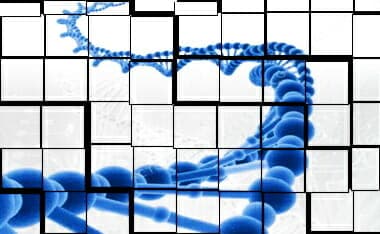
Our Maker “Weaves” Our Story On His Loom of Grace
(Originally Posted Nov 2011)
I have used this audio to teach a men’s class when filling in at church (when the regular teacher was on mission). As part of this update I just wanna note a post detailing my acknowledgement and position on the entire Ravi “fallout.” My old tribute to Ravi has a new intro that explains the entire thing. I still confidently say enjoy the MESSAGE, not the deliverer:
UPDATE
Which itself is actually an old video from 2010’ish
I wanted to add this update with a sermon excerpt noting another “miracle” of God imprinted on us. It has ta do with what is called “laminim.”
Here is a basic rundown of Laminim:
Laminin is a protein that is part of the extracellular matrix in humans and animals. The extracellular matrix (ECM) lies outside of cells and provides support and attachment for cells inside organs (along with many other functions). Laminin has “arms” that associate with other laminin molecules to form sheets and bind to cells. Laminin and other ECM proteins essentially “glue” the cells (such as those lining the stomach and intestines) to a foundation of connective tissue. This keeps the cells in place and allows them to function properly. The structure of laminin is very important for its function (as is true for all proteins). One type of congenital muscular dystrophy results from defects in laminin.
Yes, I know all the “rebuttals” of this amino acid.
Remember, it ISN’T being used as “evidence” to prove God exists. Rather, it is an evidence to those who already believe in God. It is similar to Protestant’s views on good works. Good works come after you are saved, not that good works save you or assist in your salvation. One view pre-dates, the other post-dates.
It is being used analogously to bring home a Biblical truth, and, a visual one at that. Here is a multiple micron-microscope of the laminim, for the record:
AIG, even though the article is a mixed bag of caution, goes on to note the following:
- One of the early papers on the structure and function of laminin said this: “Globular and rodlike domains are arranged in an extended four-armed, cruciform shape that is well suited for mediating between distant sites on cells and other components of the extracellular matrix” (emphasis mine).
K. Beck, I. Hunter, and J. Engel, “Structure and Function of Laminin: Anatomy of a Multidomain Glycoprotein,” The FASEB Journal 4 (1990): 148–160, doi:10.1096/fasebj.4.2.2404817.
Here is a great two paragraph explainer that sets the skeptic and the Christian who misinterpret the presentation as a “proof” of God rather than a beautiful picture of God’s grace and sacrifice.
Having watched Louie’s video several times over the years, I believe he is saying laminin [cross-shaped proteins] is an illustration, a signpost pointing to the reality of Colossians 1:17, Jesus holding all things, including us, together, and he’s not saying that laminin is literally the meaning of that verse. But I could see how someone could take his words that way.
I found this short analysis helpful. Here’s an excerpt: “The structure of laminin is only an image which by itself does not necessarily prove anything. However, when this image is considered as a parallel to the symbolic aspect of the cross and the religious significance therein, a resounding message appears: laminin is to our bodies as Jesus is to our souls. No proofs or support, nor debates, just a beautiful picture.”
With all that in mind (and my inane thought after the video), the presentation is still excellent!
After seeing the mixed micron microscope of the various laminim pictures above, I suppose you could say it also resembles the DRI guy.
Lol.
What is my “inane,” humorous thought? I am thinking of the Biblical passage that says,
- Whoever does not bear his own cross and come after me cannot be my disciple. (CSB, Lk 14:27)
Does this mean I have this “box” checked?

The Glory Of God In The Face Of Christ (2 Cor 4:3-6) | Jay Wegter
THE GOSPEL FOR LIFE (GFL) study by Jay Wegter can be found here, and is titled, “The Glory Of God In The Face Of Christ (2 Cor 4:3-6).“
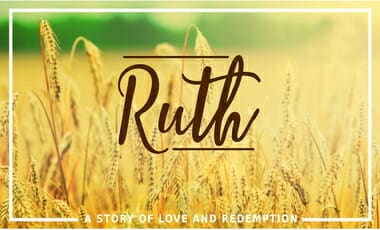
An Introduction To Ruth
From BIBLE STUDY TOOLS, a quick “5 Essential Lessons You Need to Know from the Book of Ruth”
…1) God is concerned about all people regardless of race, nationality, or status.
Ruth was not a Jew. She was a Moabite. Even though many discriminated against her, God loved her just the same. God does not discriminate, and He loves all people just the same.
2) Men and women are both equally important to God.
God cares about men and women all the same. We are all one in His eyes. While most false religions that have been constructed over the centuries often elevate men and dishonor women, Christianity is the one religion that consistently honors men and women at the same level. There is no difference in His eyes.
3) There is no such thing as an unimportant person in God’s eyes.
At a surface level, few saw Ruth as an important person. She was from Moab, which was a nation that originated from an incestuous encounter between Lot and one of his daughters (see >Genesis 19:30–36). She was a poor widow. She was living in a foreign land away from her birth family.
But God saw her as important and His plan for her life culminated in her becoming a part of the lineage of Jesus (as the grandmother to King David). God’s plan typically involves using people who are considered to be underdogs or unimportant or unimpressive from man’s perspective. His strength is made perfect in our weakness (2 Corinthians 12:9).
4) God uses “little” things to accomplish great plans.
What an amazing plan God had for a series of “little” things that all added up to important pieces in God’s big plan. God intended for Ruth to be a part of the story of the lineage of Jesus. So, He pulled together events such as the famine, Naomi’s relocation to Moab, their return to Bethlehem, Boaz’ bloodline, and many other events just to ensure that Ruth could be a part of His plan. And God does that same thing in our lives today!
5) God has a Redeemer in place who can rescue us from the devastation of our own sin.
God has a Redeemer for our lives, too, and His name is Jesus. Boaz was a type (prophetic symbol) of Christ and His redemptive work in our lives today. You see, we are all desolate as a result of our sinful natures. We are empty, just as Naomi was empty and devastated after she had lost everything and returned to Judah. Our sin has rendered us empty and desolate spiritually.
But Jesus is willing to redeem us. He wants to rescue us from the penalty of our sin. And all we have to do to be rescued is to call on Him in faith and ask Him to save us (Romans 10:13). My hope is that you are one of His redeemed. If you are not, my hope is that you will call on Him right now and ask Him to save you once and for all from the consequences of your sins!…
EVERY WOMAN IN THE BIBLE
RUTH AND NAOMI’S ROLE IN SCRIPTURE
Ruth was a Moabitess who married an Israelite. Her husband’s family had left Judah during a famine and migrated to Moab. There all the men of the family died, leaving three women alone and helpless: Naomi, the mother-in-law, and Ruth and Orpah, her daughters-in-law. The women were helpless for a simple reason. Property was owned by men, not by women. With no men left in the family, the women lacked any means of support.
Only one course of action seemed open to Naomi. She would return to Judah and seek aid from her relatives. Naomi urged her daughters-in-law to return to their fathers’ households, where they would be supported until they could remarry. Orpah followed Naomi’s advice, but Ruth insisted on staying with her mother-in-law. The loyalty and support she offered Naomi proved to be the turning point in her own life.
EXPLORING RUTH’S RELATIONSHIPS
The Book of Ruth is a rich source of insights into healthy interpersonal relationships. It reminds us that even during the dark days of the judges, godly men and women could and did live blessed and happy lives.
Naomi and Ruth’s relationship with God (Ruth 1:9–17). Ruth’s relationship with God began the way that most relationships with Him do. Ruth came to know and value someone who knew Him well. For Ruth, that person was Naomi.
Naomi spoke easily about God because He was real to her. We see this in the blessing she gave her two daughters-in-law after Naomi had decided to return to Judah: “The Lord grant that you may find rest, each in the house of her husband” (Ruth 1:9). Naomi clearly loved her daughters-in-law and loved God. In loving she became the bridge over which Ruth passed to faith.
When Naomi urged the two young women to go home and find new husbands, Orpah turned back. However, Ruth refused to return home. She truly loved her mother-in-law and would not desert her.
The biblical text clearly shows that Ruth realized that this decision called for a faith-commitment to Naomi’s God. When Naomi continued to urge Ruth to return home, Ruth expressed her commitment in unmistakable terms.
“For wherever you go, I will go;
And wherever you lodge, I will lodge;
Your people shall be my people,
And your God, my God.
Where you die, I will die,
And there will I be buried.
The LORD do so to me, and more also,
If anything but death parts you and me” (Ruth 1:16-17).
The order in which Ruth expressed her commitment is significant. In Old Testament times Israel alone had a covenant relationship with God. Ruth, aware of this relationship, pledged that “your people shall be my people,” fully aware that in committing herself to God’s covenant community she was also committing herself to Israel’s God.
Ruth’s decision to stay with Naomi was also her commitment to God. Ruth had chosen “the Lord God of Israel, under whose wings you have come for refuge” (Ruth 2:12).
Ruth’s relationship with Naomi. The first chapter of Ruth makes it clear that Ruth deeply loved and appreciated her mother-in-law. That love was expressed in a loyalty that surpassed all other ties. Rather than return to her father’s home, and stay in her own country, Ruth chose to accompany Namoi into an uncertain future in a strange land.
To see how Ruth’s commitment to her mother-in-law continued to work itself out is fascinating. For Ruth, Judah was a strange land, with unfamiliar customs. But in Naomi Ruth had a mentor, and she wisely followed her advice. The two women had returned at harvest time. Old Testament Law provided that the poor and landless could gather food in fields owned by others. That law said, “When you reap the harvest in your field, and forget a sheaf in the field, you shall not go back to get it; it shall be for the stranger, the fatherless, and the widow, that the Lord your God may bless you in all the work of your hands” (Deut. 24:19). Naomi sent Ruth out to gather grain that the harvesters missed, a process called gleaning.
Gleaning was hard work, but for the poor each kernel of grain was precious. And Ruth “continued from morning” until late in the day gathering food for Naomi and herself.
Later, after Ruth’s modesty and virtue had won the admiration of one of Naomi’s relatives, Naomi explained to Ruth the law of the redeeming relative. When a man died childless a near relative could marry his widow. The first son produced by the couple would be given the name of the dead husband and inherit his estate. Hearing of the admiration of such a relative for Ruth, Naomi urged Ruth to approach the man and ask him to take on the redeeming relative’s responsibility.
Ruth allowed herself to be guided by her mother-in-law in the selection of a potential husband. Although Naomi’s choice was neither young nor especially handsome, Ruth realized that he was a man of quality, and she followed her mother-in-law’s advice.
In every way Ruth showed herself to be loyal, hard-working, sensible, and responsive to Naomi’s advice. Clearly Ruth had a deep respect for Naomi, as well as a real love for her mother-in-law.
Ruth’s relationship with Boaz. It is difficult to overemphasize the importance of a woman’s reputation. Long before Boaz met Ruth or knew her by sight, he had heard good things about her.
In the small farming community it was impossible to keep secrets. Everyone knew that Naomi had come back from Moab and that she was accompanied by her daugher-in-law, Ruth. They knew of Ruth’s choice to commit herself to Naomi’s people and their God, and they had formed definite opinions about her character. When Boaz first met her he was able to say,
It has been fully reported to me, all that you have done for your mother-in-law since the death of your husband, and how you have left your father and your mother and the land of your birth, and have come to a people whom you did not know before (Ruth 2:11).
Well aware of her good qualities, Boaz treated her favorably. He invited her to eat with his harvesters, told her to glean with his own servants, and instructed the young men not to molest her. That this instruction was necessary reminds us of how dangerous life could be for a woman alone in the era of the judges. Boaz even instructed his harvesters to be sure to leave handfuls of grain for Ruth to collect.
When Naomi learned of what had happened and realized that Boaz was a near relative of hers, she felt that God was opening a door for Ruth. She instructed Ruth to continue to work in Boaz’s fields through the barley and wheat harvests. When the several weeks of the harvests had passed, Naomi took Ruth aside and explained her concern for Ruth’s future security.
As a near relative, Boaz was qualified not only to marry Ruth but also to reclaim the lands of Naomi’s husband. So Naomi told Ruth how to approach Boaz.
During the harvest season workers often slept outside in the fields. Naomi told Ruth to go at night to the place where Boaz was sleeping and lie down at his feet. Some have taken this as an attempted seduction. However, the position Ruth took was symbolic and a request that Boaz take her under his protection as a wife. Boaz clearly understood the symbolism and promised to do as she requested, “for all the people of my town know that you are a virtuous woman” (Ruth 3:11).
Before Boaz could marry Ruth he had to obtain the permission of a man who was an even nearer relative of Naomi. When Boaz explained that to redeem the fields of Naomi’s dead husband the man would also have to marry Ruth, the man declined. He already had grown sons. If he should father more than one son with Ruth, he would have to provide for them from the estate he intended to reserve for his first family. With this claim disposed of, Boaz married Ruth.
The marriage was blessed with a son, and that son became the grandfather of King David and an ancestor of Jesus Christ.
RUTH: A CLOSE-UP
Ruth is one of Scripture’s most attractive women. She was a woman with a marvelous capacity for love and loyalty. While Ruth was decisive and ready to risk an uncertain future out of loyalty to Naomi, she was far from headstrong. She was wise enough to follow Naomi’s advice, ready and willing to work to support the two of them. Ruth quickly established a good reputation in her adopted homeland and won the approval of all who knew her. Her reputation rather than her physical attributes first won the admiration of Boaz, who responded by treating her graciously. The relationship that grew between them was founded solidly on the mutual appreciation of each for the good and gracious qualities of the other.
While Ruth truly is a love story, it is far from those romantic novels that emphasize passion and physical attributes. Ruth’s and Boaz’s love grew out of their commitment to values far more significant than mere good looks.
NAOMI: A CLOSE-UP
Naomi’s name, “pleasantness,” is suggestive. She cared for her daughters-in-law and earned their love and loyalty. Even Orpah, who chose to remain in Moab, wept when she left Naomi to return home. We can sense in Naomi an especially generous spirit. Although alone, she urged her daughters-in-law to think of their own future rather than Naomi’s welfare. Back in Judah, Naomi felt a deep responsibility to Ruth and determined to “seek security” for her, “that it may be well with” you (Ruth 3:1).
We should hardly be surprised that Naomi was such a powerful influence in Ruth’s life. People who truly and selflessly love others have a tendency to draw those others to them and through them to the Lord.
RUTH AND NAOMI: EXAMPLES FOR TODAY
- Naomi is a wonderful example of how to evangelize. She didn’t try to talk Ruth to faith. Instead she loved Ruth and lived a life that Ruth recognized was worth emulating. Ruth wanted the peace, character, and loving-kindness she saw displayed in her mother-in-law’s life.
- Naomi shows us how to be a gracious in-law. We don’t know whether Naomi had counseled her sons against marrying out of their faith. We do know that she loved both her daughters-in-law enough to put their welfare above her own. Eventually she even loved Ruth to faith in God.
- Many parents hesitate to offer advice to adult children. While we cannot force our will on them, we can share our thoughts and our wisdom with those willing to listen. When advice is given lovingly and with respect for our children’s independence, it will often be welcomed.
- Naomi is a glorious reminder of how God can make one of the least likely to be remembered into someone who will never be forgotten. When we feel insignificant we can remember how God used a starving widow to win a woman to faith who became an ancestress of Jesus Christ.
- Ruth reminds us that character does count. Good men are more concerned about finding a godly spouse than a sexy one!
Sue Poorman Richards and Larry Richards, Every Woman in the Bible (Nashville, TN: T. Nelson Publishers, 1999), 105–107.
BAKER ENCYCLOPEDIA OF THE BIBLE
Ruth (Person). Moabitess and the widow of Mahlon, the son of Naomi and Elimelech, who were Ephrathites from Bethlehem living in Moab because of a severe famine in Judah. Upon the death of Elimelech and Naomi’s two sons, Naomi returned to Bethlehem with her daughter-in-law Ruth during the time of the barley harvest (Ru 1:4–22). While gleaning in the barley fields of Boaz, Ruth found favor in his eyes (2:2–22). She later married Boaz, when he, serving as nearest kin to the childless Naomi, purchased Naomi’s estate to keep it within the family (4:5–13). Ruth is mentioned in Matthew’s genealogy of Christ as the mother of Obed and the great-grandmother of David (Mt 1:5).
RUTH, BOOK OF
Author and Data. The author of the book is unknown. The question of authorship has particular connection with the date of writing, and a few clues provide at least an “educated guess.” The book must have been written sometime after the beginning of David’s reign. The reference of 4:18–22, which pertains to the historical significance of Ruth as David’s great-grandmother, bears this out. Since foreign marriages were not approved in the Book of Ruth, it scarcely could have been written during the period in which Solomon began his policy of foreign marriages. Also, David’s close friendship with Moab might have prompted someone in his kingdom to write the book, thus presenting objective rationale for David’s actions (see 1 Sm 22:3–5). Consequently the author may have been someone close to David, possibly Samuel, Nathan, or Abiathar.
This view is not without its critics, however. Some scholars consider the opening statement, “in the days when the judges ruled,” to demonstrate the late composition of the book. However, such a phrase need not refer to an extensive period. In today’s world one might use a similar phrase in reference to conditions at the beginning of the 20th century. The dates of the judges probably comprise a period of about 300 years, beginning with the judgeship of Othniel and concluding with that of Samson, though Samuel also served as a judge. If the genealogical information is complete in 4:18–22, the events took place during the life of David’s great-grandfather and mark the birth of his grandfather. Allowing a 35-year generation span, the events would have taken place somewhere about the turn of the 11th century bc, or about 100 years before David’s birth.
Purpose. The book’s purpose is closely related to its date of composition. Assuming an early date, that is, one close to David’s lifetime, its principal thrust must be the authentication of the Davidic line. The book may be considered as a justification for including the godly Moabitess in the nation of Israel.
Content
Introduction (1:1–5). Driven by famine, Elimelech, his wife Naomi, and two sons, Mahlon and Chilion, cross the Jordan to stay for a period of time in Moab where there was sufficient provision. The two sons, after marrying Moabite women, die, and their father dies as well. Naomi is left a widow with two foreign daughters-in-law.
Return to Bethlehem (1:6–22). Hearing reports from Bethlehem that the famine had ended, Naomi makes preparations to return. Both of her daughters-in-law, Orpah and Ruth, accompany her for at least a portion of the journey. Probably thinking of the problems which might be encountered by them as foreigners in Judah, Naomi strongly urges the girls to stay in their own land. Both of the young widows refuse, but Naomi presents the facts. First, she is not pregnant, so the chance of a younger brother fulfilling the levirate responsibility is not imminent. Second, she has no prospects of remarriage and consequently no prospect of further children. Then, she also notes that even if the first two conditions were met immediately, the possibility of their waiting was impossible. Orpah is persuaded and kisses her mother-in-law good-bye.
But Ruth “clung to her” (neb). The verb, having the connotation of being glued to something, is the same verb used of marriage (Gn 2:24). Ruth demonstrates her serious intentions by making five commitments. In essence, Ruth renounces her former life in order to gain a life which she considers of greater value. At this point, she is contrasted with Naomi, who had encouraged both of them to return to Moab and its gods (1:15). But Ruth decides to follow the God of Israel and his laws. Ruth’s appeal to the God of Israel was more than equal to Naomi’s pleas, and the two of them return together.
Their arrival in Bethlehem is traumatic for Naomi. Having left Bethlehem with a husband and two sons, she returns empty. She tells her friends to call her “Mara” (bitter). But she has returned at a propitious time, the beginning of the harvest season.
Reaping in the Fields of Boaz (2:1–23). The first verse of the chapter provides the setting for the narrative which follows, introducing Boaz, a wealthy relative of Elimelech.
Ruth volunteers to glean the fields, to follow the reapers and pick up the insignificant amounts left behind. Gleaners were also permitted to harvest the grain in the corners of the fields, a provision for the poor contained in Yahweh’s Law (Lv 19:9,10).
She happens to come to the field of Boaz. As he visits this field, he notices Ruth, inquires about her, and learns her identity. His overseer reports that she has industriously worked the fields from early morning until that time. Boaz, attracted to her because of her loyalty and concern for Naomi, graciously makes additional provision for her. She is given a favored position in reaping, directly behind the main body of reapers. Further, she is to receive water which has been drawn for her by the young men—an unorthodox arrangement.
Ruth, falling before Boaz in a gesture of great humility and respect, asks why as a foreigner she should be accorded such favor. Boaz gives two reasons, her kindness to her mother-in-law, and her spiritual insight which led her to seek after Israel’s God, “under whose wings you have come to take refuge” (neb).
She is also given a place at the reapers’ table and, upon Boaz’s orders, returns to the fields—this time to reap from the unharvested grain. At the end of the day she returns home to Naomi and tells her of the day’s events. Naomi informs Ruth that Boaz has the right of redemption. Ruth returns to his fields until the end of the harvest season.
Relying upon the Kinsman (3:1–18). Naomi advises Ruth with regard to approaching Boaz as a goel, or kinsman-redeemer.
The plan suggested by Naomi seems peculiar, yet some thoughts may give a certain colouring to it. (1) Naomi seems to have believed that Boaz was the nearest kinsman, being ignorant of the yet nearer one (v 12). Consequently, according to Israelite law (Dt 25:5ff.), it would be the duty of Boaz to marry Ruth to raise up seed to the dead. (2) The general tone of Naomi’s character is clearly shown in this book to be that of a God-fearing woman, so that it is certain that, however curious in its external form, there can be nothing counselled here which really is repugnant to God’s law, or shocking to a virtuous man such as Boaz, otherwise Naomi would simply have been most completely frustrating her own purpose. (3) Her knowledge by long intimacy of Ruth’s character, and doubtless also of that of Boaz by report, would enable her to feel sure that no ill effects could accrue (Sinker, Ellicott’s Commentary on the Whole Bible, Ruth, p 283).
His response to Ruth’s actions demonstrates his gentlemanly concerns for her. He explains the situation of not being the nearest kinsman, but promises that he will take care of the necessary procedures the next day. Protecting her reputation, Boaz sends her home before daylight. Naomi, wise in these matters, succinctly predicts of Boaz, “He will not rest until he has settled the matter today” (neb).
Redeeming the Inheritance (4:1–21). Boaz goes to the place of business, the city gate. The city gate area comprised the forum of the city where the public affairs of the city were discussed. Boaz indicates that he wishes to discuss a matter of business with the nearer kinsman. Ten of the city elders act as witnesses. Beginning with the property matter, Boaz inquires whether this nearer kinsman is willing to acquire the property for Naomi, including the traditional stipulation, “On the day when you acquire the field from Naomi, you also acquire Ruth the Moabitess, the dead man’s wife” (neb). The nearer kinsman is unwilling because to marry Ruth would inevitably cost him some financial loss, since he would have to divide his own property with any son of his born to Ruth. Thus he relinquishes his rights by the custom of taking off his shoe. Significantly the shoe was symbolic of the land rights which belonged to the inheritance. So Boaz takes the part of the kinsman-redeemer.
The marriage of Boaz and Ruth produces a son who, under Israel’s laws, is reckoned as Naomi’s child and heir.
Teaching. The Book of Ruth traces the lineage of David to the Messiah. The completion of that line is in Matthew 1 and finds its focus in Jesus.
A second teaching is the beauty of God’s grace. A foreigner, even a Moabitess, can be linked with Israel’s blessing.
Theologically, the concept of kinsman-redeemer as a type of Messiah is clearly evident. He must be a blood relative, have the ability to purchase, be willing to buy the inheritance, and be willing to marry the widow of the deceased kinsman.
And finally, the love which Ruth shows becomes a pattern of devotion, a woman of whom it was said to Naomi, “your daughter-in-law who loves you is better to you than seven sons.”
Bibliography. A.E. Cundall and L. Morris, Judges and Ruth; G. Gerleman, Ruth; R.M. Halo, The Theology of the Book of Ruth; A.R.S. Kennedy, The Book of Ruth; C. Lattey, The Book of Ruth.
Walter A. Elwell and Barry J. Beitzel, “Ruth (Person),” Baker Encyclopedia of the Bible (Grand Rapids, MI: Baker Book House, 1988), 1871–1873.

Worshipfully Prioritize Your Marriage by Faith!
This past Sunday, Faith Community Church picked back up the summer series of “Faith Matters.” Greg Gifford (WEBSITE | TWITTER) taught on how to apply Scripture to prioritizing your marriage by strengthening the “core” of this all-important relationship. Below are some practical tools to help you prioritize your marriage by faith:
1) DIGITAL BOUNDARIES: This means you need a location to keep your phones while at home so that they are not always on you, and always demanding your attention. A simply priority would be that you do not engage technology before you meaningfully engage your spouse.
2) FIRST FIFTEEN MINUTES PROJECT: Another thing that I encourage couples to all the time is the idea of crystallizing the first fifteen minutes that you are home for each other. This means that the wife stops what she’s doing if she’s home, or the husband stops what he’s doing and you guys take 15 minutes to talk with each other. We have to hang up the phone when our spouse walks in the door. We have to put dinner on hold for a few minutes. This is just a very practical way of saying you matter to me. You’re a priority. Children—be quiet. TV—be quiet. Telephone—be quiet. My spouse is home and they are a priority to me.
3) 3-2-1-1 COMMUNICATION EXERCISE (PDF)
4) INTIMACY INVENTORY (PDF)
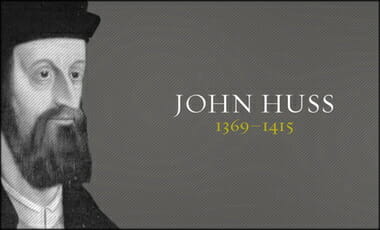
John Hus: The Goose Who Became a Swan |Erwin Lutzer|

Sola Fide: Faith Alone | Erwin Lutzer and R. C. Sproul
College Park Church (April 2017) – Lecture by Erwin Lutzer.
R. C. Sproul speaks on the doctrine of justification by faith alone and how it was debated among Roman Catholic and Protestant Christians.
